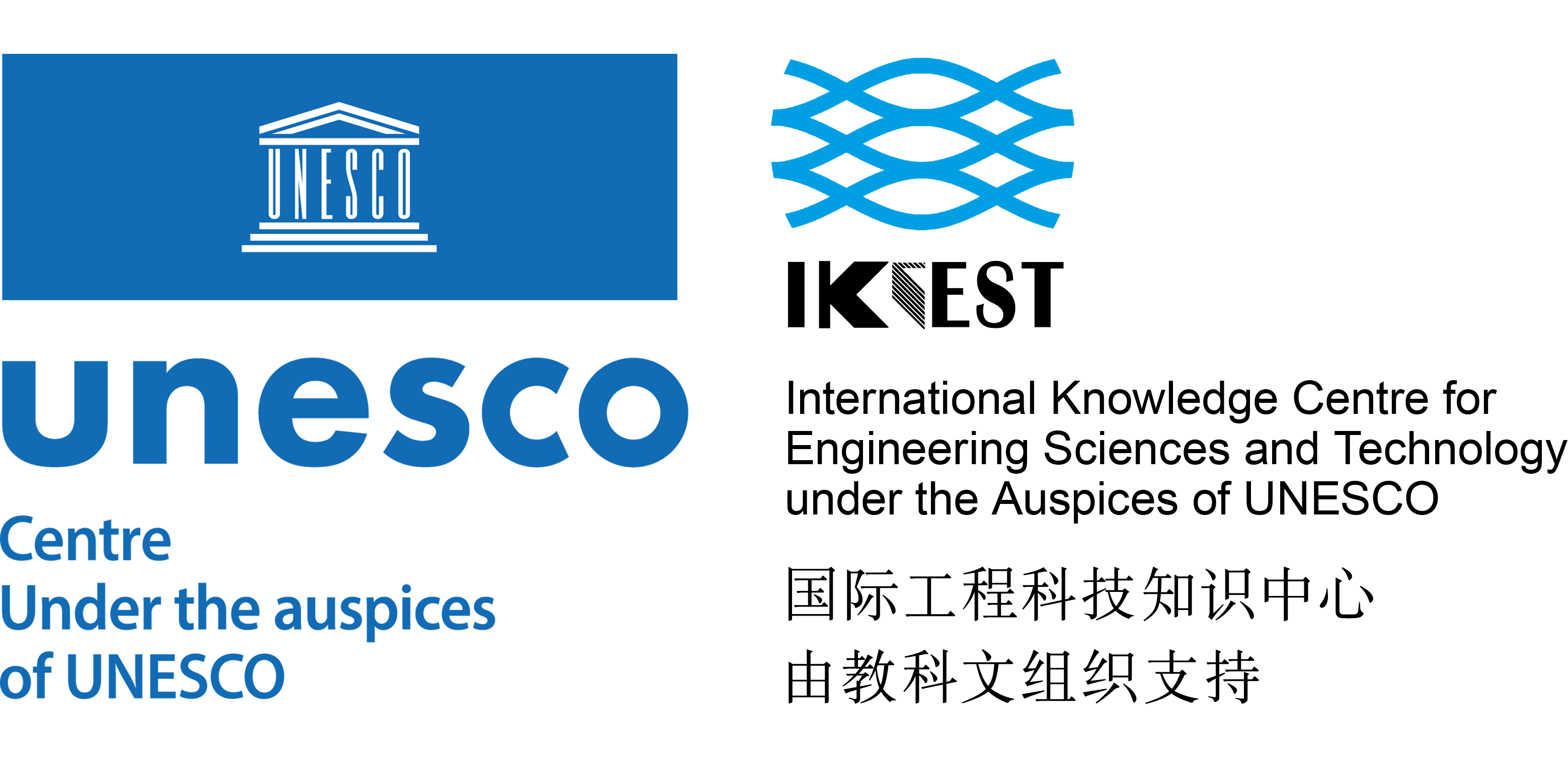Journal
Please choose volume & issue:
-
Kokum fruit mediated biogenic gold nanoparticles with photoluminescent, photocatalytic and antioxidant activities
Abstracts:Biosynthesis of gold nanoparticles (AuNPs) is rapidly emerging area of research and development. In this study, simple, rapid and green method that uses Kokum fruit extract for synthesis of photoluminescent AuNPs with catalytic and antioxidant activities has been reported. For synthesis, the parameters such as 0.6 mM HAuCl
4, 1:3 ratio of HAuCl4 to extract, pH 4 and incubation at 80 °C for 15 min were found optimum. The biogenic AuNPs were characterized by UV visible spectroscopy, fourier transform infra-red (FTIR) spectroscopy, energy dispersive X-ray (EDS) spectroscopy, X-ray powder diffraction (XRD) pattern analysis, selected area electron diffraction pattern (SAED) analysis and transmission electron microscope (TEM) imaging. The photoluminescence investigation showed broad excitation band with excitation maximum at 311 nm and emission band with an emission maximum at 455 nm. Noteworthy, the fluorescence emitted by AuNPs was found to be excitation dependent. The investigation of catalytic activity demonstrated that AuNPs possess good photocatalytic activity and could be used for rapid photocatalytic degradation of methylene violet (MV) dye. In addition, AuNPs showed good dose dependent DPPH radical scavenging activity. The proposed method demonstrated that Kokum fruit extract can be used for rapid and green synthesis of photoluminescent AuNPs with catalytic and antioxidant activities. -
Isolation and characterisation of antioxidative peptides from bromelain-hydrolysed brown rice protein by proteomic technique
Abstracts:In this study, proteins from Thai brown rice (Khao Dawk Mali 105) were separated into albumin (2.18%), globulin (3.98%), glutelin (84.23%), and prolamin (9.61%) fractions, and were hydrolysed with various bromelain concentrations and hydrolysis times. Liquid chromatography-electrospray ionization/mass spectrometry (LC-ESI–MS/MS) was conducted to assess the composition, molecular weight (MW) distribution, and sequence of the resulting peptides, and showed that most peptides have a MW below 2000 Da (60–70%). Glutelin fraction hydrolysates exhibited the highest 2,2′-azino-bis 3-ethylbenzthiazoline-6-sulfonic (ABTS
+) radical-scavenging (0.69 ± 0.04 mM trolox) and copper chelating (4.12 ± 0.01 mg ethylenediaminetetraacetic acid; EDTA) activities, which was further fractionated into six fractions using reversed-phase high-performance liquid chromatography. The fourth fraction showed the highest ABTS + scavenging (1.08 ± 0.03 mM trolox) and copper chelating (5.00 ± 0.02 mg EDTA) activity. LC–MS/MS analysis revealed that the peptides with MW less than 1500 Da and hydrophobic or aromatic N-terminal residues, such as SPFWNINAHS, MPVDVIANAYR, VVYFDQTQAQA, AVYVYDVNNNANQ, YNILSGFDTEL and EFFDVSNELFQ, possibly contributed to the highest antioxidant activity in fourth fraction. -
Partial characterization and primary structure of collagen subunits from golden pompano skins
Abstracts:Alpha and beta collagen subunits were isolated from golden pompano skins by cellulose column at different pH. As a result, the α
1 subunit and β subunit were successively eluted by a linear gradient of 0–35 mM NaCl at pH 4.7, while α2 -subunit was eluted at pH 5.2. SDS-PAGE result showed that the molecular weights of α1 , α2 and β subunits were about 131, 119 and 256 kDa, respectively. The contents of glycine, alanine and imino acids in the α1 subunit were more similar to the β subunit than α2 subunit. Analyses of deduced amino acid sequences revealed that the theoretical sizes and isoelectric points of collagen α1 were 137 kDa and pH 5.95, while those of collagen α2 were 126 kDa and pH 9.27, respectively. Compared to the collagen α2 , collagen α1 had a cysteine-rich domain, more tripeptide unit of Gly-Pro-Pro, and specific α-helix domain. -
Enzymatic synthesis of catechol-functionalized polyphenols with excellent selectivity and productivity
Abstracts:Polyphenol products have become more and more attractive due to their strong anti-oxidant properties and a great variety of promising pharmacological activities and beneficial effects on human health. In this study, mushroom tyrosinase immobilized as cross-linked enzyme aggregates (CLEAs) was used as the catalyst for
ortho -hydroxylation reactions to produce 3,4-dihydroxyphenylacetic acid, piceatannol and 3′-hydroxypterostilbene from 4-hydroxyphenylacetic acid, resveratrol and pterostilbene, respectively, with excellent selectivity and productivity. This is the first report of synthesizing these three polyphenolic compounds with tyrosinase CLEAs as catalyst, and the first study of biocatalytic production of 3′-hydroxypterostilbene. Introducing a deep eutectic solvent (DES) into the tyrosinase CLEA preparation exhibited a positive effect in terms of enhancing the catalytic activity of the immobilized enzyme and also promoting the synthesis of the polyphenol products. -
Molecular characterization of a first endo-acting β-1,4-xylanase of family 10 glycoside hydrolase (PsGH10A) from Pseudopedobacter saltans comb. nov.
Abstracts:An
endo -xylanase (Ps GH10A) of family 10 glycoside hydrolase fromPseudopedobacter saltans was cloned, expressed and purified. Substrate specificity analysis ofPs GH10A showed activity against β-1,4-xylans. It showed maximum activity against beechwood xylan (59.7 ± 1.1 U/mg) followed by xylan (Mw. 20,000–30,000) (57.1 ± 0.7 U/mg).Ps GH10A displayed maximum activity at pH 6.0 and 40 °C. The enzyme was stable in the pH range, from 6.0 to 7.5 and showed thermostability up to 40 °C. The kinetic parameters ofPs GH10A using beechwood xylan determined were Km 6.2 mg/mL and Vmax 72 U/mg. The activity ofPs GH10A was 29 ± 2.4% enhanced by 2 mM Mn2+ ions and inhibited by less than 50 ± 1.6% by 2 mM Zn2+, Pb2+ or Cu2+ ions. The time-dependent TLC analysis of hydrolyzed products of beechwood xylan released byPs GH10A showed the release of xylose, xylobiose and xylotetraose as end products confirming the endolytic mode of action.Ps GH10A hydrolyzed products of xylan and substituted xylan indicate production of series of short-chain xylooligosaccharides and arabinoxylo-saccharides.Ps GH10A also showed saccharification of AFEX pretreated poplar and sugarcane bagasse. Therefore, it can be used for various biotechnological applications such as for prebiotic xylooligosaccharides and bioethanol production from pretreated agrowaste biomass. This is the first report on β-1,4-xylanase cloned fromPseudopedobacter saltans . -
Glu56Ser mutation improves the enzymatic activity and catalytic stability of Bacillus subtilis l-aspartate α-decarboxylase for an efficient β-alanine production
Abstracts:
l -aspartate α-decarboxylase (ADC) is responsible for the decarboxylation ofl -aspartate to form β-alanine in the bacterial biosynthetic pathway. However, the low activity and stability of ADC are the primary factors restricting β-alanine biosynthesis. In this study, to improve the ADC activity and thermostability and to attenuate the degree of its inactivation in the reaction, we expressed and characterized theBacillus substilis ADC (BsADC) inEscherichia coli and rationally designed several site-directed mutations adjacent to its catalytic site. The Glu56Ser (E56S) mutant showed a 1.6-fold higher activity than the wild-type enzyme. This mutant retained approximately 65% activity when incubated at 70 °C for 12 h. More importantly, the E56S mutant showed an approximately 1.4-fold increased residual activity compared with the wild type during 2 h reaction at 37 °C, suggesting that the E56S mutation attenuated the mechanism-based inactivation of the enzyme. The mutant enzyme also catalyzed the β-alanine synthesis with a product yield of 215.3 g per liter culture, which is the highest reported yield to date. This work proposes a protein engineering strategy that improves the enzymatic activity and thermostability and reduces the degree of enzyme inactivation in the reaction, thereby improving the efficiency of β-alanine biosynthesis. -
Contribution of domain B to the catalytic properties of a Flavobacteriaceae α-amylase
Abstracts:A mesophilic α-amylase (FSA) from
Sinomicrobium sp. 5DNS001 is closely related with a thermophilicPyrococcus α-amylase (PWA) in glycoside hydrolase (GH) 13_7 subfamily. In this study, a fusion FSA (FA PB FC ) with high hydrolysis efficiency was generated by replacing domain B with corresponding regions of PWA. As a result, the thermostability of FA PB FC was greatly enhanced, with 100% amylolytic activity retained after 3-h incubation at 70 °C. Moreover, the pH profile of FA PB FC shifted toward the acidic pH of PWA (pH 5.0–6.0). Isothermal titration calorimetry analyses further verified that FA PB FC had a two metal (Ca, Zn) binding center that is most similar to that of PWA. These variations indicate that domain B replacement is an available and effective strategy for α-amylases engineering: many genetically engineered α-amylases with desired catalytic properties can be generated by domain B fusion within various GH13 α-amylases. -
High-level production of a fungal β-glucosidase with application potentials in the cost-effective production of Trichoderma reesei cellulase
Abstracts:β-glucosidase (BGL), an important component in cellulase complex, plays a crucial role in cellulose hydrolysis. However, its activity in cellulase system of
Trichoderma reesei , the conventional cellulase producer, is extremely low. In this study, β-glucosidase gene (bgl ) fromAspergillus niger was cloned and achieved secreted expression inPichia pastoris . High-level production of BGL (129 IU/mL) was achieved in a 1 m3 fermenter by using an optimized mixed-feed strategy, in which glycerol/methanol at the ratio of 1:5 and 30 g/L corn steep powder were fed to maintain the methanol concentration of 0.7% (v/v). The obtained BGL was then used to catalyze the synthesis of sophorose, a strong inducer for cellulase production, from glucose via a transglycosylation reaction. When used the resultant glucose-sophorose mixture (GSM) containing 7.08% sophorose as both carbon source and inducer, the cellulase yield produced byTrichoderma reesei was high up to 95.23 IU/mL (filter paper activity), which was 2.1-fold of that achieved by lactose. These results indicated that the BGL is potential for application in the cost-effective and highly efficient production ofTrichoderma reesei cellulase. -
Enhanced biosynthesis and characterization of surfactin isoforms with engineered Bacillus subtilis through promoter replacement and Vitreoscilla hemoglobin co-expression
Abstracts:The surfactin produced by
Bacillus subtilis has great potential in enhanced oil recovery, agriculture and bio-mediation. Its further applications, however, are restrained by its low producing titer and the limited information about its isoforms. Using a strong IPTG-inducible promoter Pg3, the native promoter of surfactin synthase in wild-typeB. subtilis THY-15 was replaced, which gave engineered THY-15/Pg3-srfA . In a shaking flask, the surfactin titer of THY-15/Pg3-srfA reached 8.2 g/L, significantly higher than 1.2 g/L of THY-15. In a 5-L fermenter, however, the surfactin titer of THY-15/Pg3-srfA shrank to 5.6 g/L, which was later confirmed to be related to the low dissolved oxygen limit during fermentation. AVitreoscilla hemoglobin (VHb) gene was then introduced into the engineered strain, obtaining a novel THY-15/Pg3-srfA (VHb). Through the successful expression of VHb, the surfactin titer of THY-15/Pg3-srfA (VHb) increased to 10.2 g/L in the flask and 8.6 g/L in the fermenter, for increases of 24% and 51%, respectively, compared with the non-VHb engineered strain. The contents, structures and surface activity of the surfactin isoforms produced by the engineered strains were further highlighted. Surfactin C15-isoform with 14.8 mg/L Critical Micelle Concentration, which can reduce surface tension of water to 27.1 mN/m (25 °C), is the most preferred. -
A physico-chemical approach to the study of genipin crosslinking of biofabricated peptide hydrogels
Abstracts:Peptide-based hydrogels have been widely used for both tissue engineering approaches and therapeutic drug delivery mainly thanks to their tissue-like water content and tunable physicochemical properties. In particular, the modulation of the hydrogel chemical structure influences hydrogel properties. The most common approach for tuning hydrogel properties in terms of cell adhesion or release efficiency of entrapped compounds is chemical crosslinking. In this study Fluorenylmethyloxycarbonyl (Fmoc)-tripeptide hydrogels were synthetized in the presence of Genipin as a crosslinker using a biocatalyzed reverse hydrolysis reaction occurring between FmocPhe and Phe
2 in the presence ofPseudomonas fluorescens lipase. Infrared Attenuated Total Reflection (IR-ATR), Liquid Chromatography coupled to Mass Spectrometry (LC-MS) and Scanning Electron Microscopy (SEM) investigations were used to investigate the interaction of Genipin with Fmoc-peptides as well as with their precursors. The whole instrumental platform allowed us to identify two crosslinked products that had never been reported previously and provide deeper insight into the use of natural crosslinkers for peptide hydrogel modification.
Hot Journals
- Risk Breakdown Matrix for Risk-Based Inspection of Transportation Infrastructure Projects
- Social Control in Outsourced Architectural and Engineering Design Consulting Projects: Behavioral Consequences and Motivational Mechanism
- 2022 Best Paper Award
- Hold-Ups and Failures in Negotiated Order: Unearthing the Nuances of Rework Causation in Construction
- Prevalence and Risk Factors for Poor Mental Health and Suicidal Ideation in the Nigerian Construction Industry
- CFRP–Cable-Stayed Bridge Hybrid with Partial Suspension and a Span Exceeding 3,000 m: Concept, Optimization, and Construction
- Impact of Wind Load Characteristics on Computed Bridge Stay-Cable Forces Used for Bridge Health Monitoring
- Weak-End and Frequency Detection of Elastically Supported Bridges by Contact Residual Response of Two-Axle Test Vehicle in a Round Trip
- Development of Performance-Based Fragility Curves of Coastal Bridges Subjected to Extreme Wave-Induced Loads
- An Analytical Model to Evaluate Short- and Long-Term Performances of Post-Tensioned Concrete Box-Girder Bridges Rehabilitated by an Ultrahigh-Performance Concrete Overlay
- Three-Dimensional Velocity Distribution in Straight Smooth Channels Modeled by Modified Log-Law
- Experimental Investigation on Flow Past Two and Three Side-by-Side Inclined Cylinders
- An Experimental Investigation of Rotor–Box Aerodynamic Interaction 1
- Modeling Gas–Liquid Flow Between Rotating and Nonrotating Annular Disks
- Entry Length Requirements for Two- and Three-Dimensional Laminar Couette–Poiseuille Flows
Advanced Materials (3,745)
- Structured Perovskite Light Absorbers for Efficient and Stable Photovoltaics
- Strategies for High‐Performance Solid‐State Triplet–Triplet‐Annihilation‐Based Photon Upconversion
- Atomic Engineering Catalyzed MnO2 Electrolysis Kinetics for a Hybrid Aqueous Battery with High Power and Energy Density
- Crystal Adaptronics: Global Performance Indices for Dynamic Crystals as Organic Thermal Actuators (Adv. Mater. 20/2020)
- Enlightening Materials with Photoswitches
Acta Astronautica (1,768)
- Mixed-integer trajectory optimization with no-fly zone constraints for a hypersonic vehicle
- Adaptive control design for active Pogo suppression of large strap-on liquid launch vehicles
- Machine learning based approach for modeling and forecasting of GPS–TEC during diverse solar phase periods
- Effect of two-dimensional micro-cavity surface on hypersonic boundary layer
- Investigation on burning behaviors of aluminum agglomerates in solid rocket motor with detailed combustion model








 User Center
User Center My Training Class
My Training Class Feedback
Feedback





